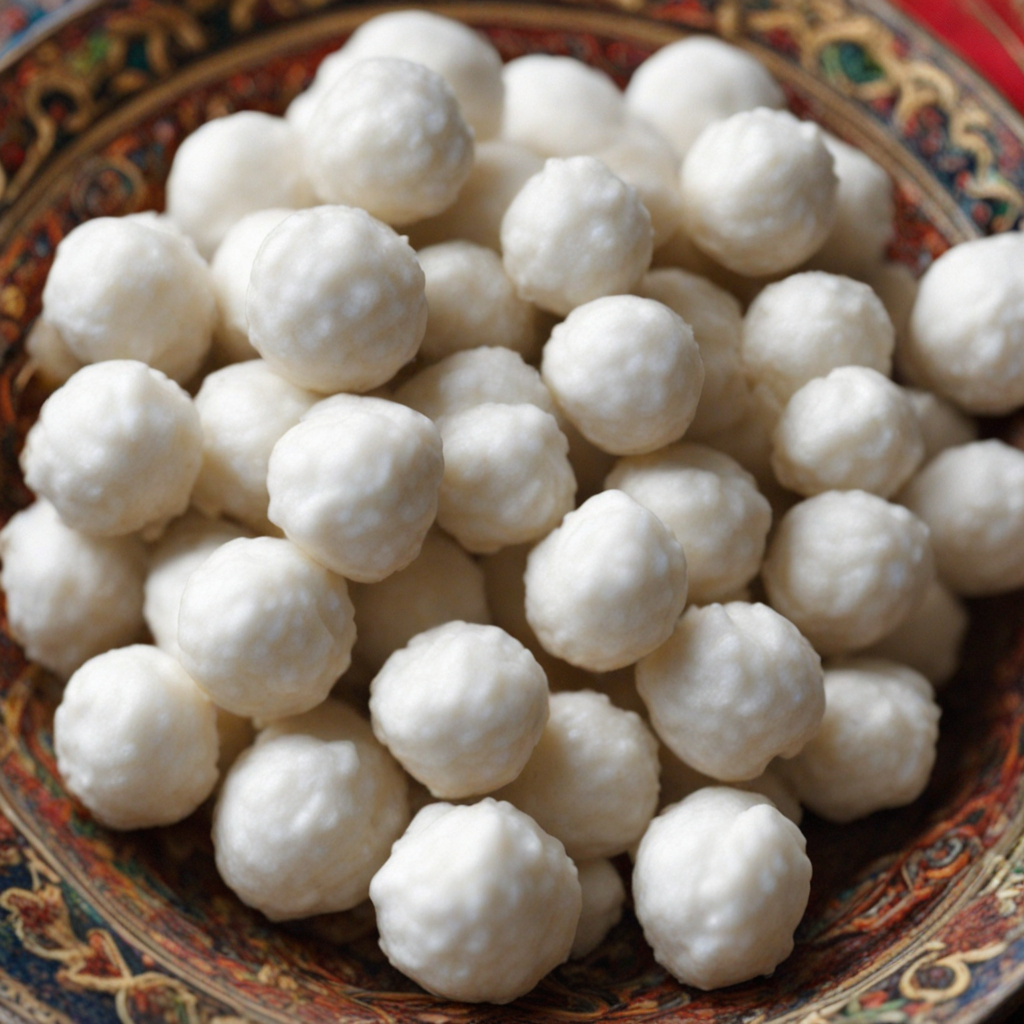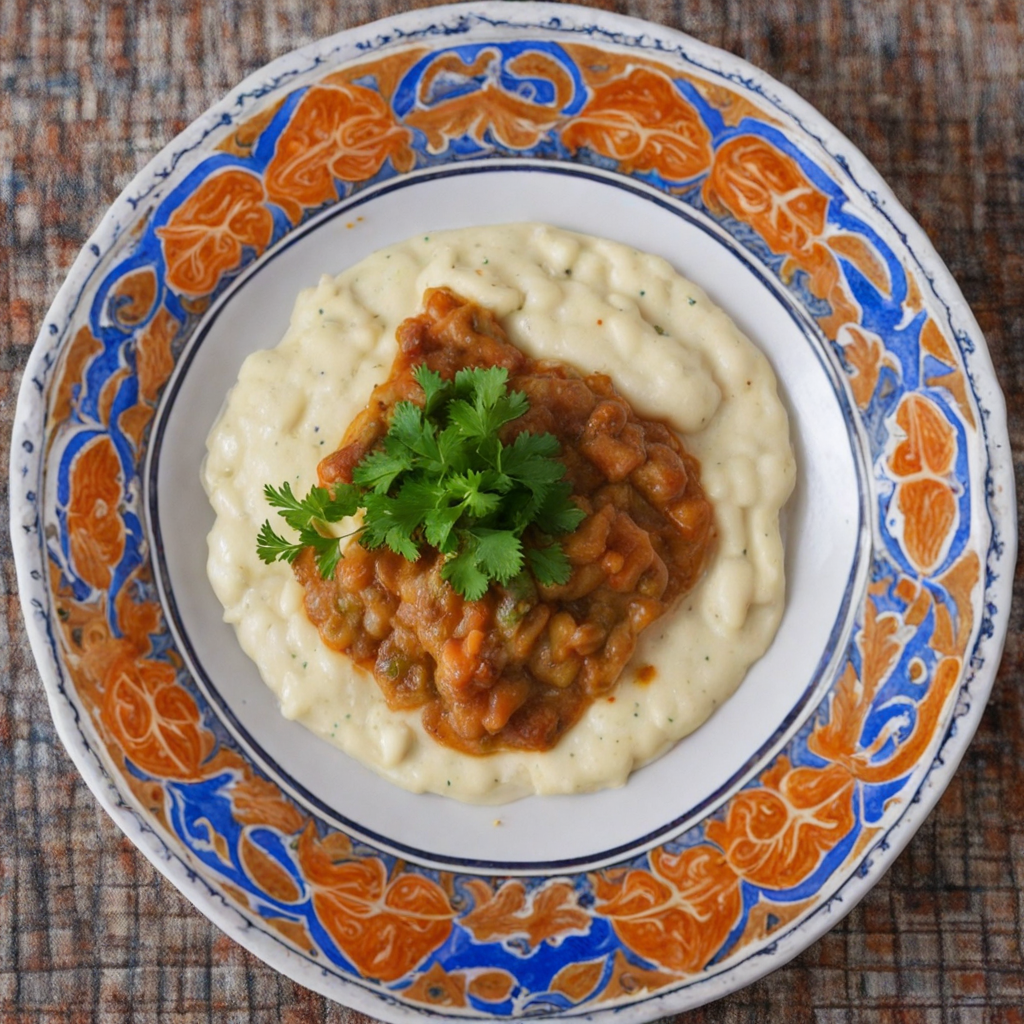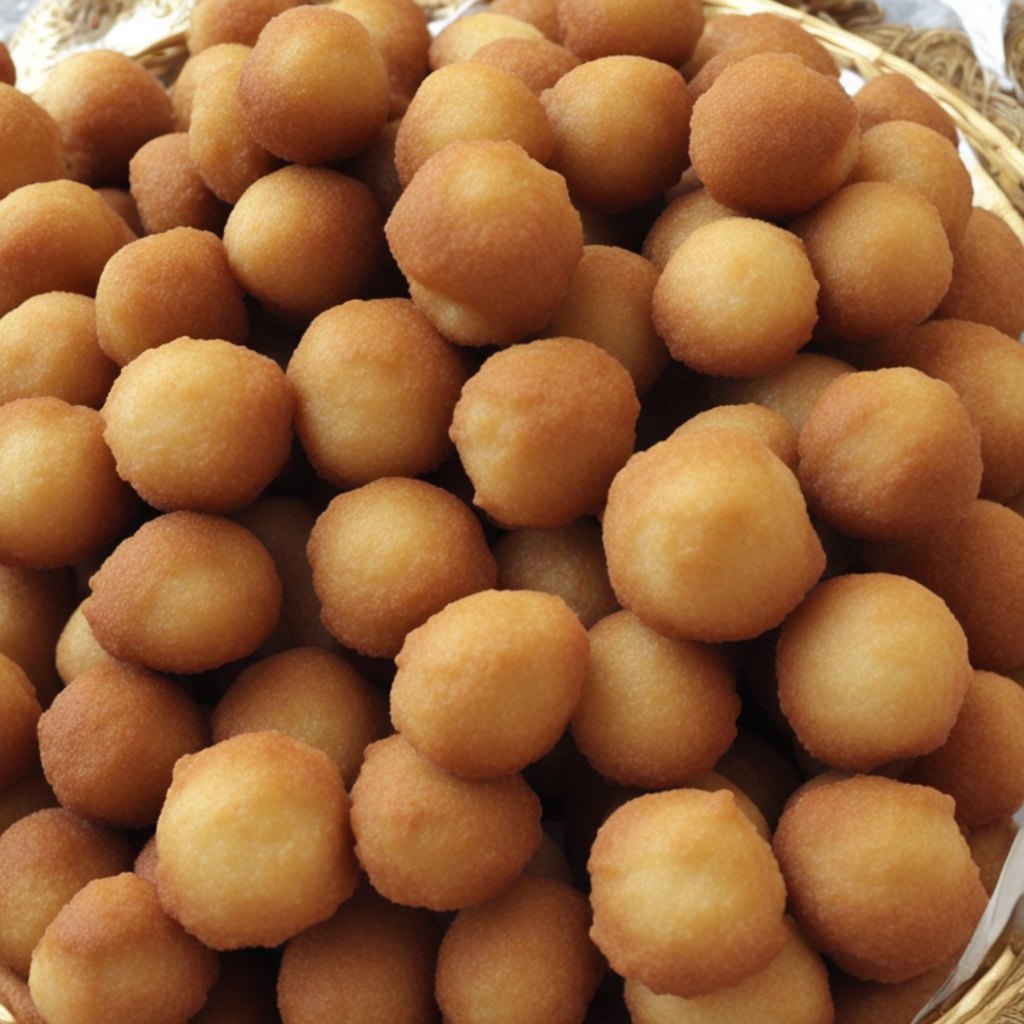Sambusa
Sambusa is a delightful pastry that hails from Tajikistan, embodying the rich culinary traditions of Central Asia. These savory treats are typically made from thin layers of dough that are expertly folded around a variety of fillings. While the dough is often similar to that used for dumplings or samosas, the texture is uniquely flaky and crisp once fried or baked. The golden-brown exterior gives way to a warm and inviting interior, making each bite a comforting experience that highlights the art of Tajik cooking. The fillings of sambusa can vary widely, showcasing the region's diverse agricultural bounty. Common ingredients include spiced minced meat—such as lamb or beef—combined with onions, garlic, and an array of aromatic spices like cumin and coriander. For vegetarian versions, you might find a mixture of potatoes, lentils, and greens, all seasoned to perfection. This versatility not only caters to different taste preferences but also reflects the cultural influences that have shaped Tajik cuisine over the centuries. Often served as a popular street food or appetizer, sambusas are best enjoyed hot and fresh, accompanied by a tangy dipping sauce or yogurt for an added layer of flavor. Their satisfying crunch and savory fillings make them a perfect snack for any time of day, whether enjoyed on their own or as part of a larger meal. Discovering sambusa is like uncovering a hidden gem of Tajik culinary heritage, offering a unique taste experience that is both comforting and intriguing.
How It Became This Dish
The History of Самбуса: A Culinary Journey from Tajikistan #### Origins The самбуса, a savory pastry filled with various ingredients, has a rich history deeply rooted in the culinary traditions of Central Asia, particularly in Tajikistan. Its origins can be traced back to ancient times, influenced by the diverse cultures and peoples who inhabited the region along the Silk Road. The name "самбуса" is derived from the Persian word "sambusak," which itself has roots in the Arabic "sambusaj," meaning a stuffed pastry. Historically, the area now known as Tajikistan was a melting pot of civilizations due to its strategic location as a vital trade route connecting East and West. The movement of traders, travelers, and armies fostered cultural exchanges that influenced local cuisines. The самбуса likely evolved from ancient stuffed bread recipes, which were common in many cultures, including Persian, Arab, and Turkic. As these cultures mingled, so did their culinary practices, leading to the development of unique dishes like самбуса. #### Cultural Significance In Tajik culture, самбуса is not merely a food item; it embodies hospitality and community. Traditionally, these pastries are served during gatherings, celebrations, and religious holidays, playing a crucial role in social rituals. The act of sharing самбуса symbolizes friendship and unity, making it a staple in festive meals and communal feasts. The filling of самбуса can vary widely, reflecting the agricultural bounty of the region and the preferences of different communities. Common fillings include minced meat (such as lamb or beef), onions, and spices, but vegetarian versions filled with potatoes, lentils, or pumpkin are also popular. This versatility allows for personal expressions of taste and creativity, with families often passing down their unique recipes through generations. #### Development Over Time As time progressed, the самбуса evolved alongside the socio-political landscape of Tajikistan. The 20th century brought significant changes, particularly with the establishment of the Soviet Union. During this time, traditional foods like самбуса underwent modifications to adapt to the changing tastes and availability of ingredients. The influence of Soviet culinary practices introduced new flavors and techniques, although the core essence of самбуса remained intact. In the late 20th century, after Tajikistan gained independence in 1991, there was a resurgence of interest in traditional foods, including самбуса. The newfound independence fostered a sense of national identity, prompting many Tajiks to embrace their culinary heritage. Food became a means of expressing cultural pride and nostalgia, leading to a revival of traditional recipes and cooking methods. Today, самбуса is not only a beloved home-cooked dish but also a popular street food in Tajikistan and neighboring regions. Vendors selling freshly baked самбуса can be found in bustling markets and street corners, attracting locals and tourists alike. The pastry's portability and rich flavors make it an ideal snack or meal on the go, further solidifying its place in contemporary Tajik cuisine. #### Regional Variations While самбуса is quintessentially Tajik, its popularity extends across Central Asia, leading to various regional adaptations. In Afghanistan, for example, the dish is known as "samosa," and it often features spiced potatoes or vegetables. In Uzbekistan, similar pastries called "samsa" are typically baked in a tandoor, imparting a distinct smoky flavor. Despite these variations, the core concept of a stuffed pastry remains, illustrating the interconnectedness of Central Asian culinary traditions. The ingredients used in самбуса can also reflect local agricultural practices. In Tajikistan, where mountainous terrains and fertile valleys abound, the availability of fresh produce and herbs allows for diverse fillings. Traditional spices such as cumin, coriander, and black pepper enhance the flavors, while fresh herbs like dill and parsley add brightness. This adaptability to local resources ensures that самбуса remains a vibrant and dynamic dish. #### Modern-Day Significance In contemporary Tajikistan, самбуса continues to hold a special place in the hearts and stomachs of its people. It is frequently featured at weddings, family gatherings, and national celebrations like Nowruz (Persian New Year), where the act of serving самбуса signifies abundance and prosperity. The dish has also found its way into the culinary scene abroad, as Tajik émigrés introduce their traditional food to new audiences, fostering a greater appreciation for Central Asian cuisine. The revival of interest in traditional foods has also led to culinary festivals and events celebrating Tajik cuisine, where самбуса often takes center stage. Chefs and home cooks alike experiment with new fillings and presentations, blending traditional techniques with modern culinary trends. This fusion of old and new not only honors the historical significance of самбуса but also ensures its relevance in the ever-evolving food landscape. #### Conclusion The history of самбуса in Tajikistan is a captivating tale of cultural exchange, resilience, and culinary evolution. From its ancient origins along the Silk Road to its modern-day significance as a symbol of hospitality and community, самбуса embodies the rich tapestry of Tajik culinary heritage. As it continues to adapt and thrive in a globalized world, this beloved pastry serves as a delicious reminder of the interconnectedness of cultures and the enduring power of food to bring people together. Through every bite of самбуса, one can savor the history, tradition, and warmth of Tajik hospitality, making it more than just a dish—it's a celebration of life itself.
You may like
Discover local flavors from Tajikistan







